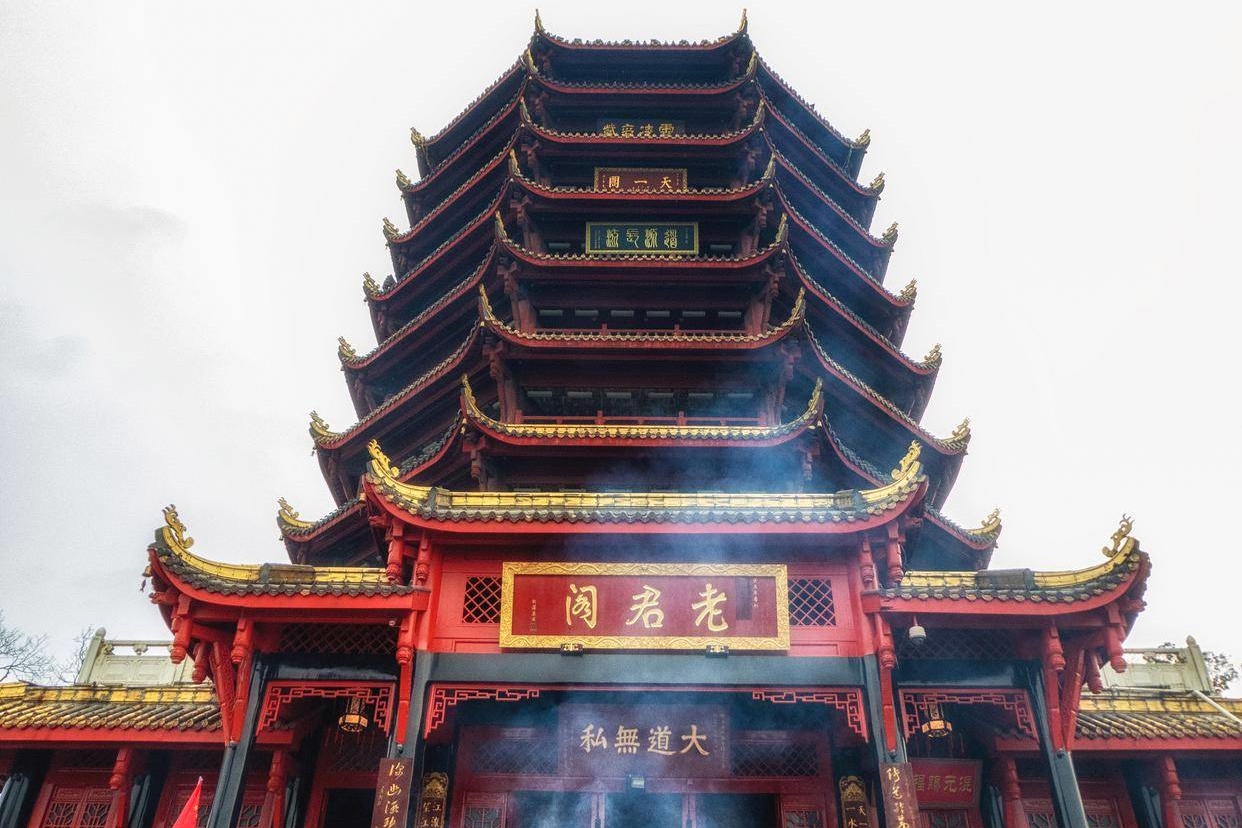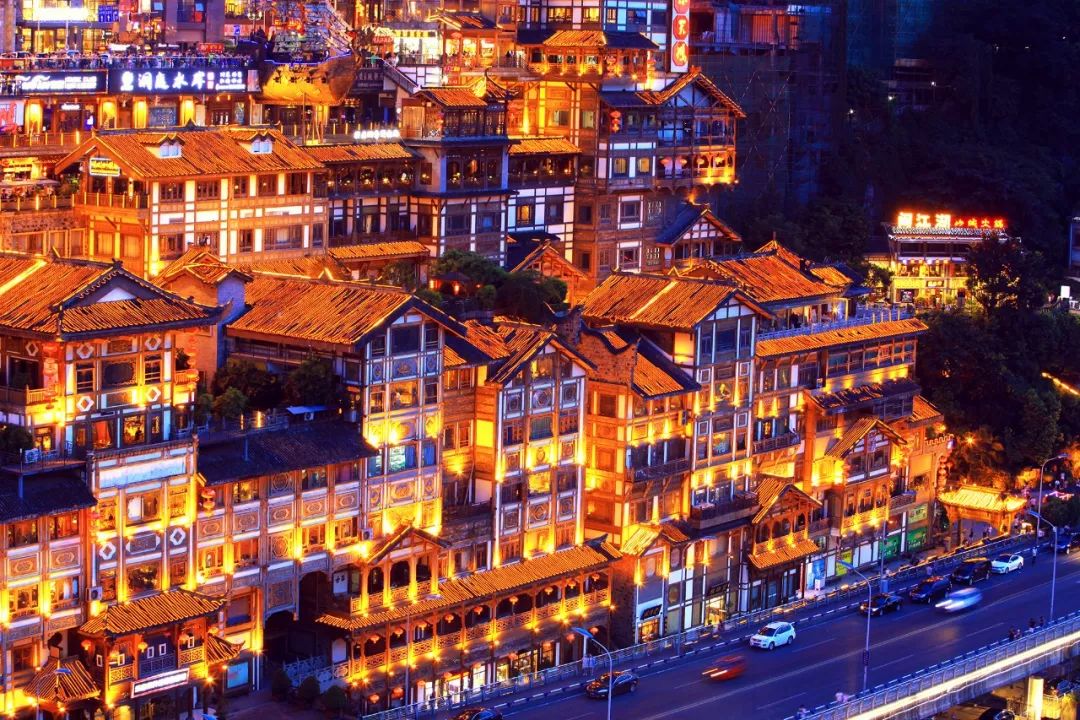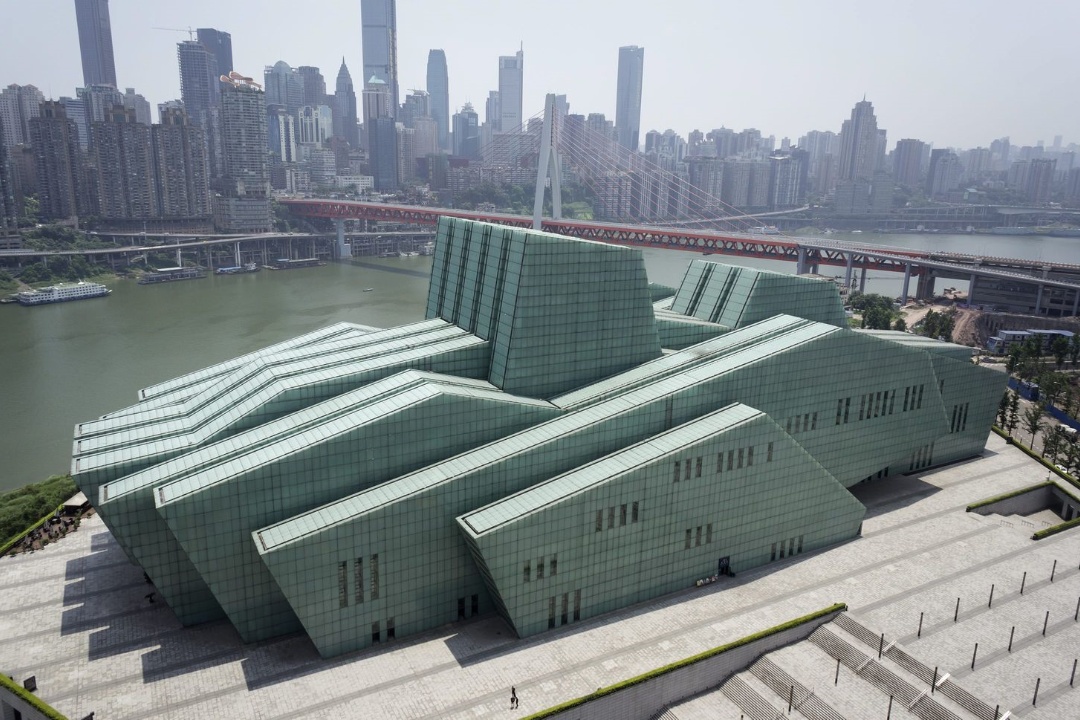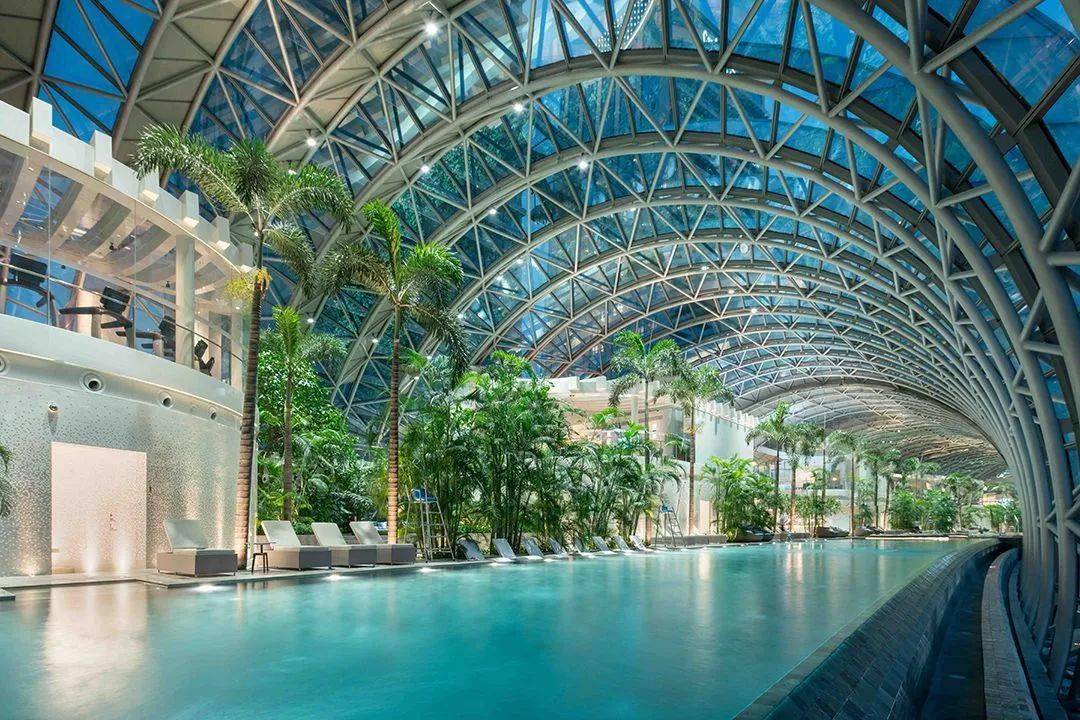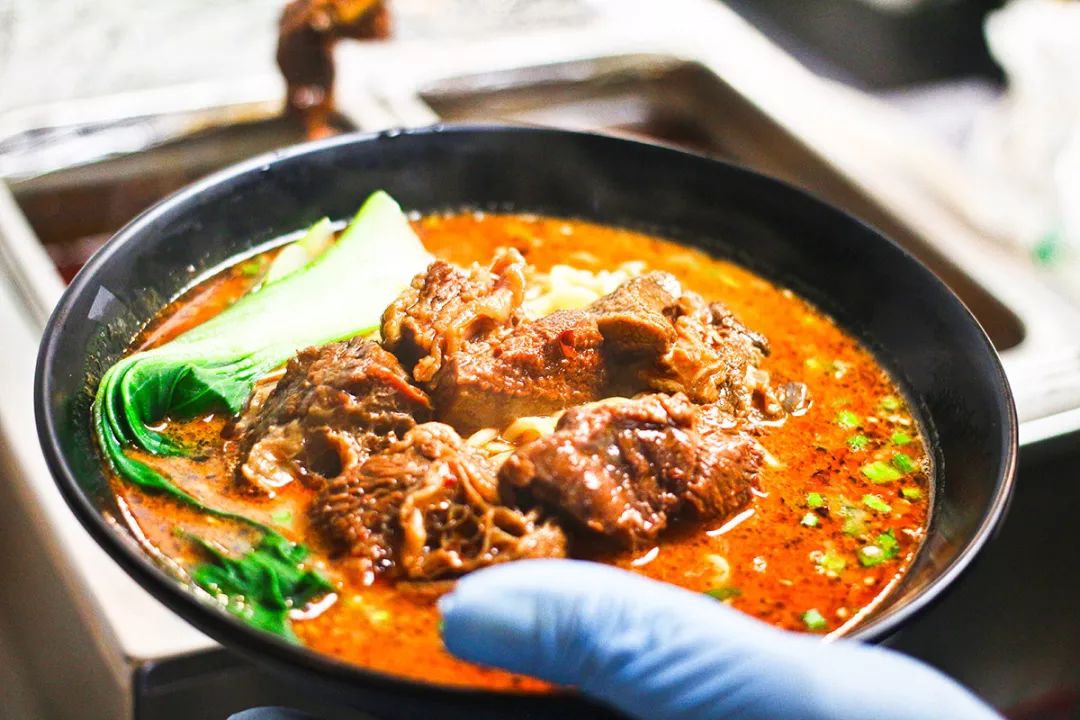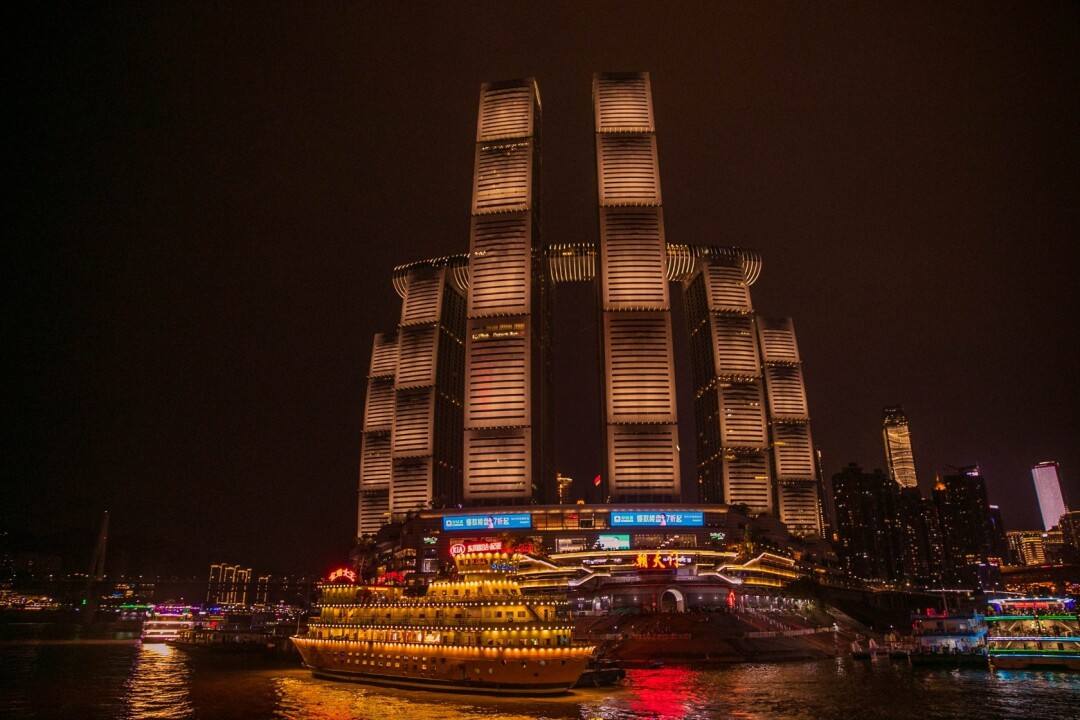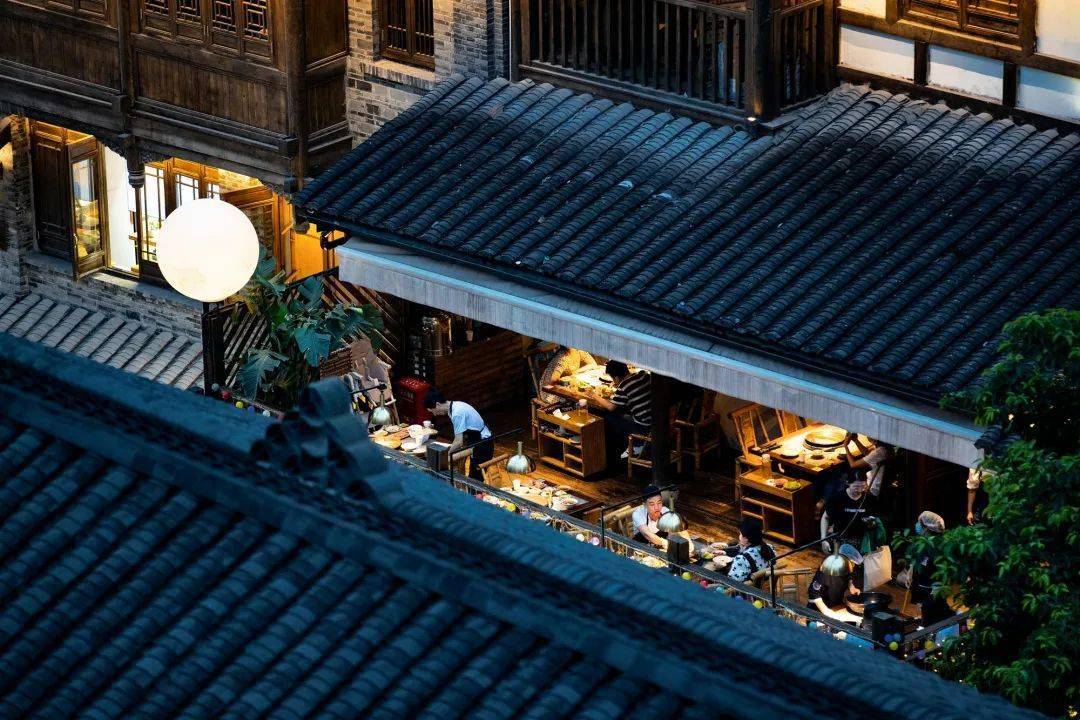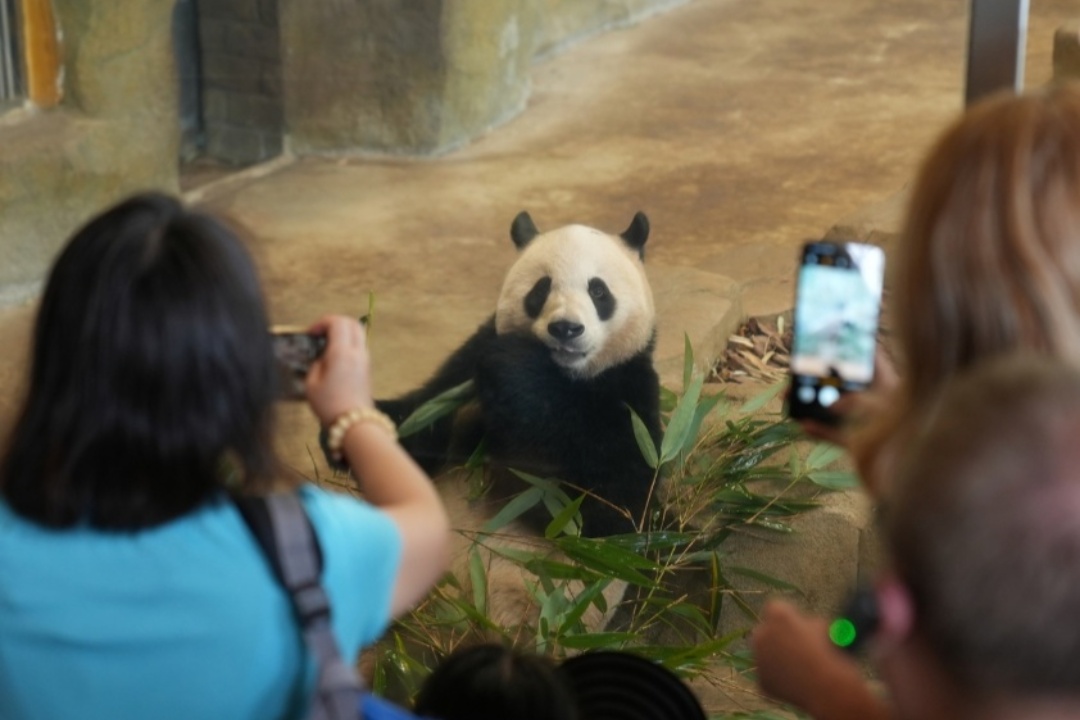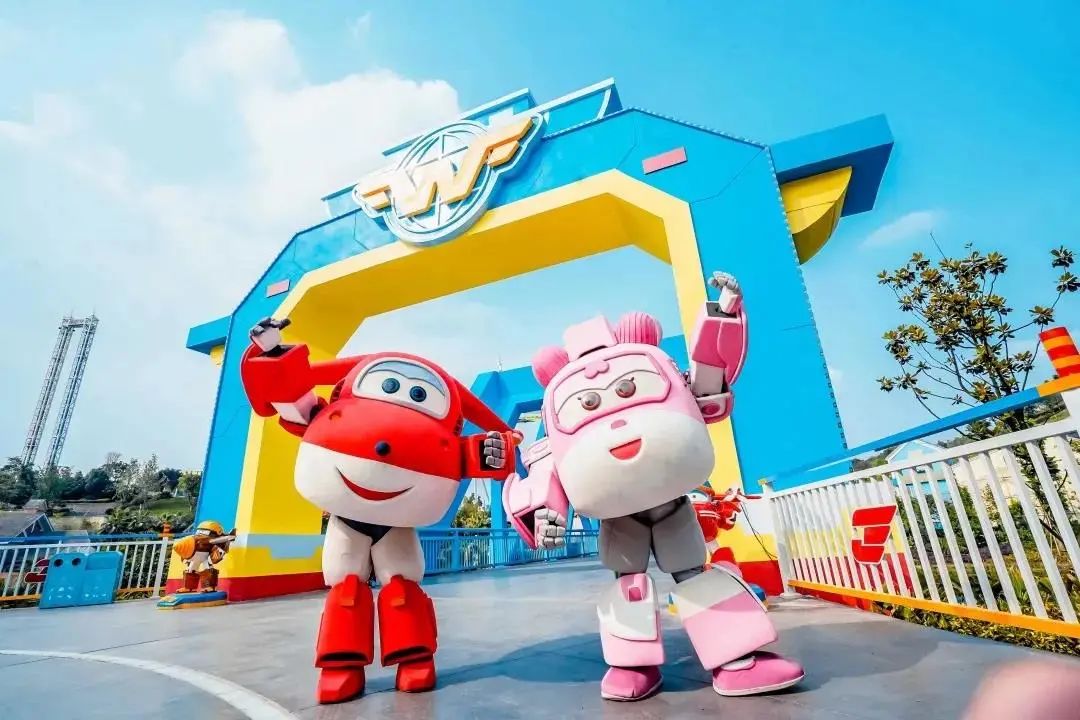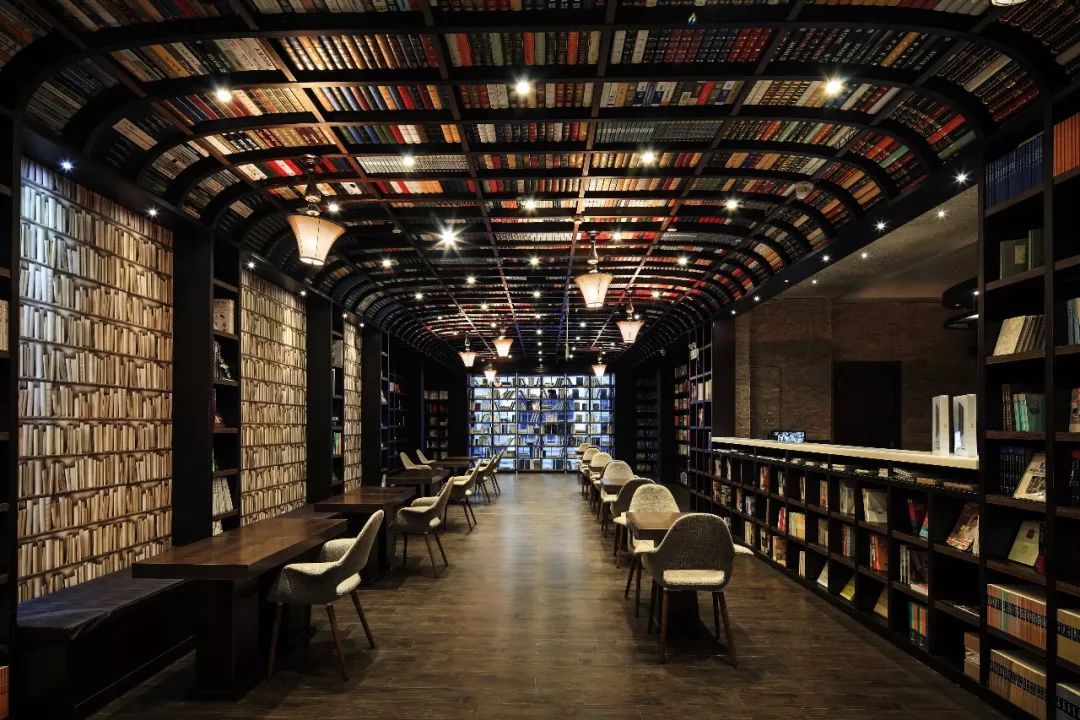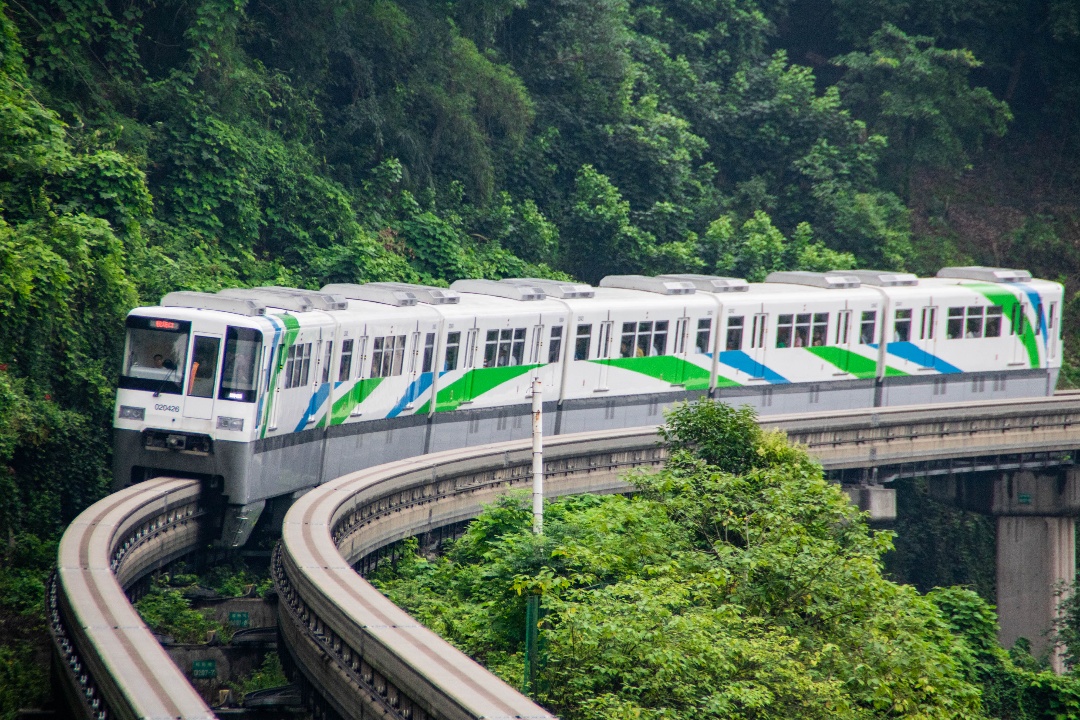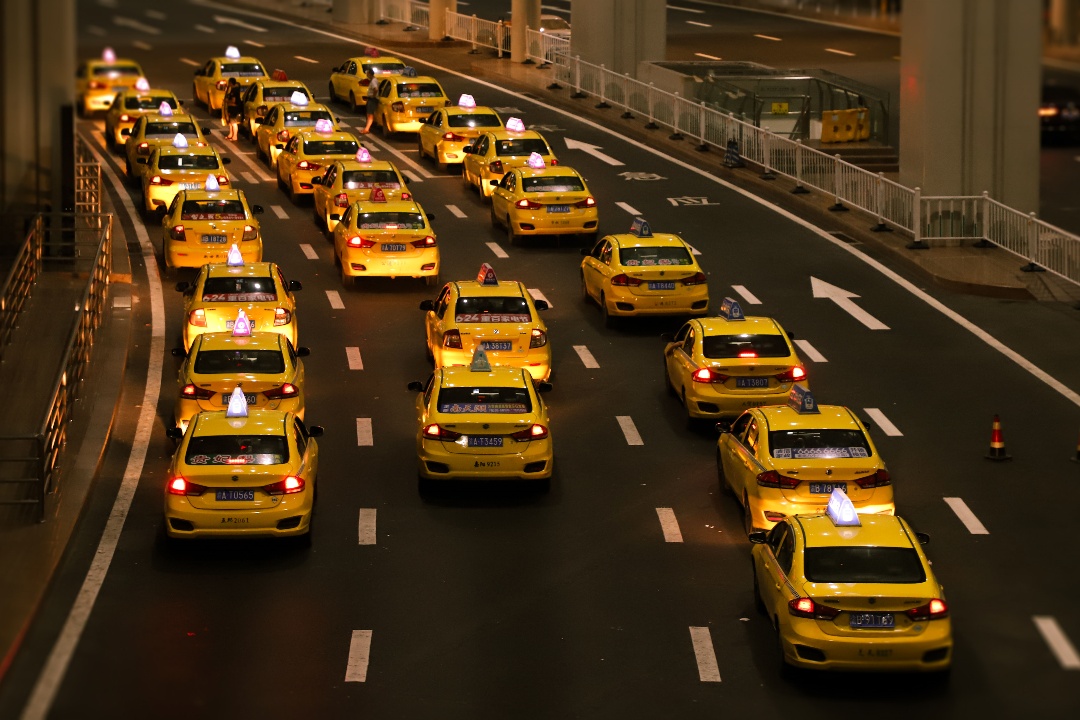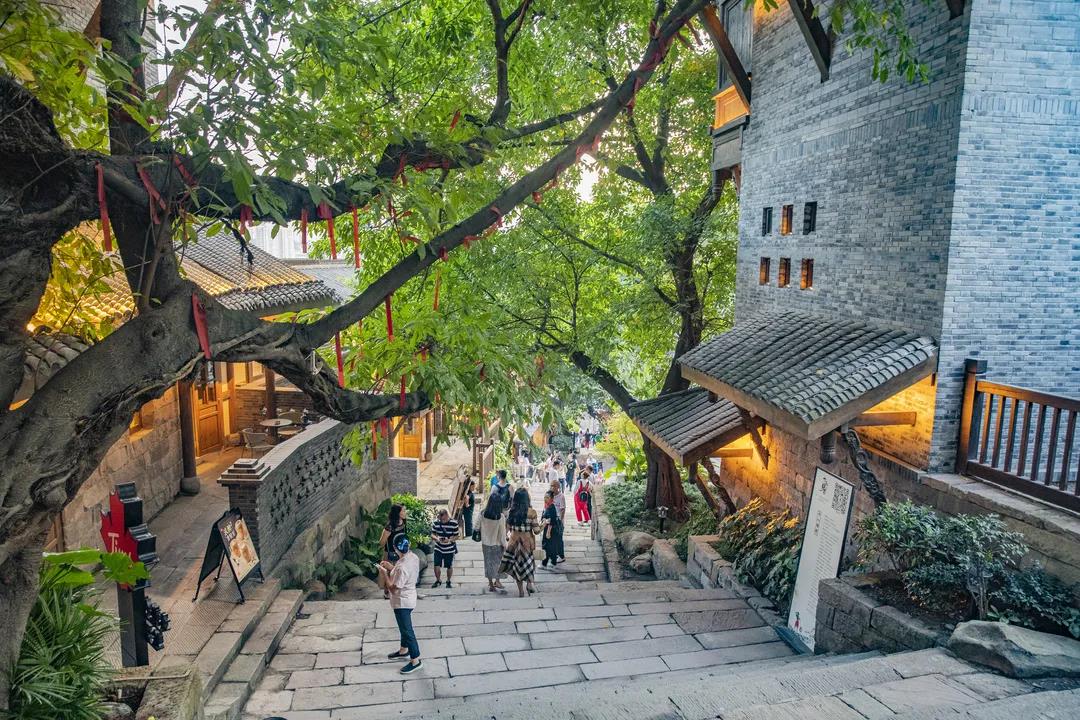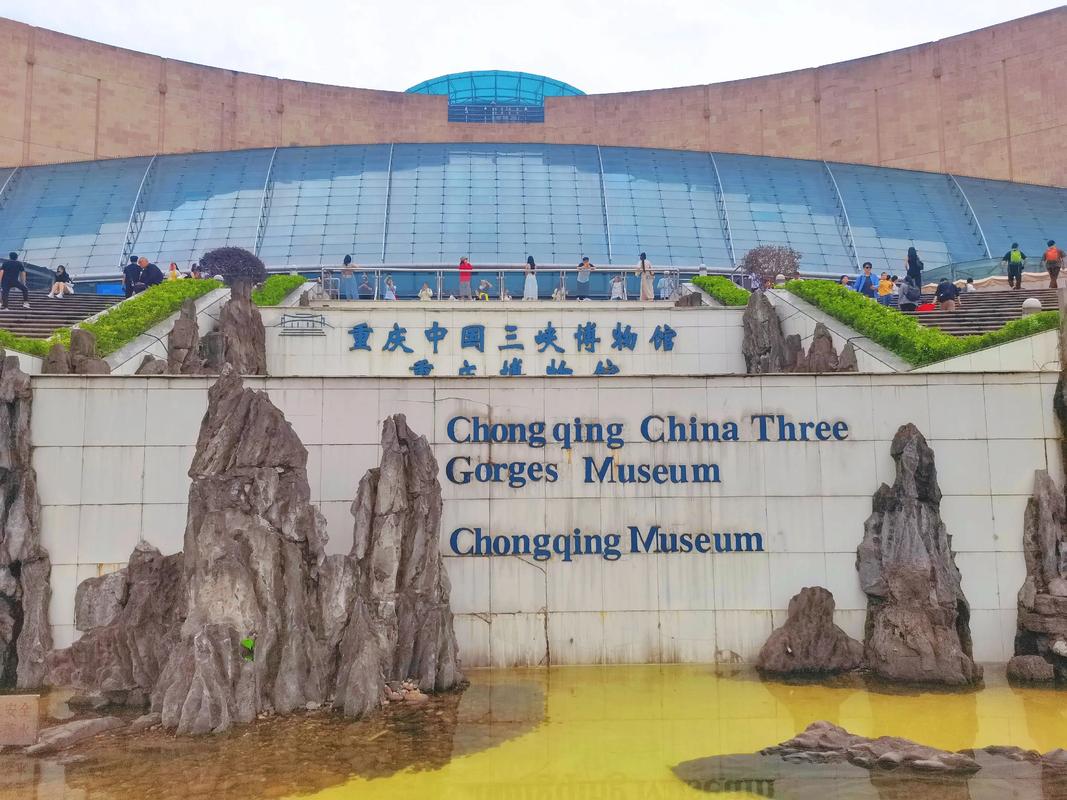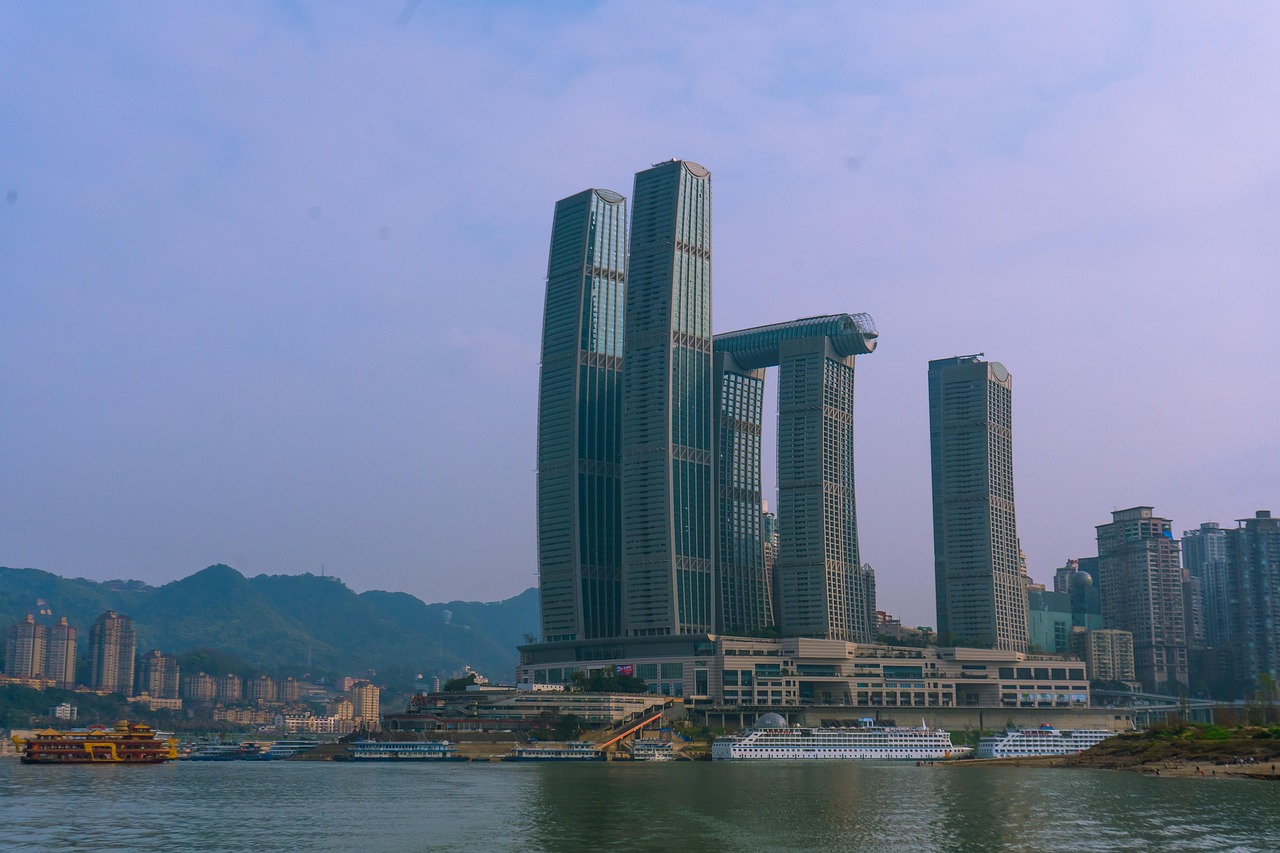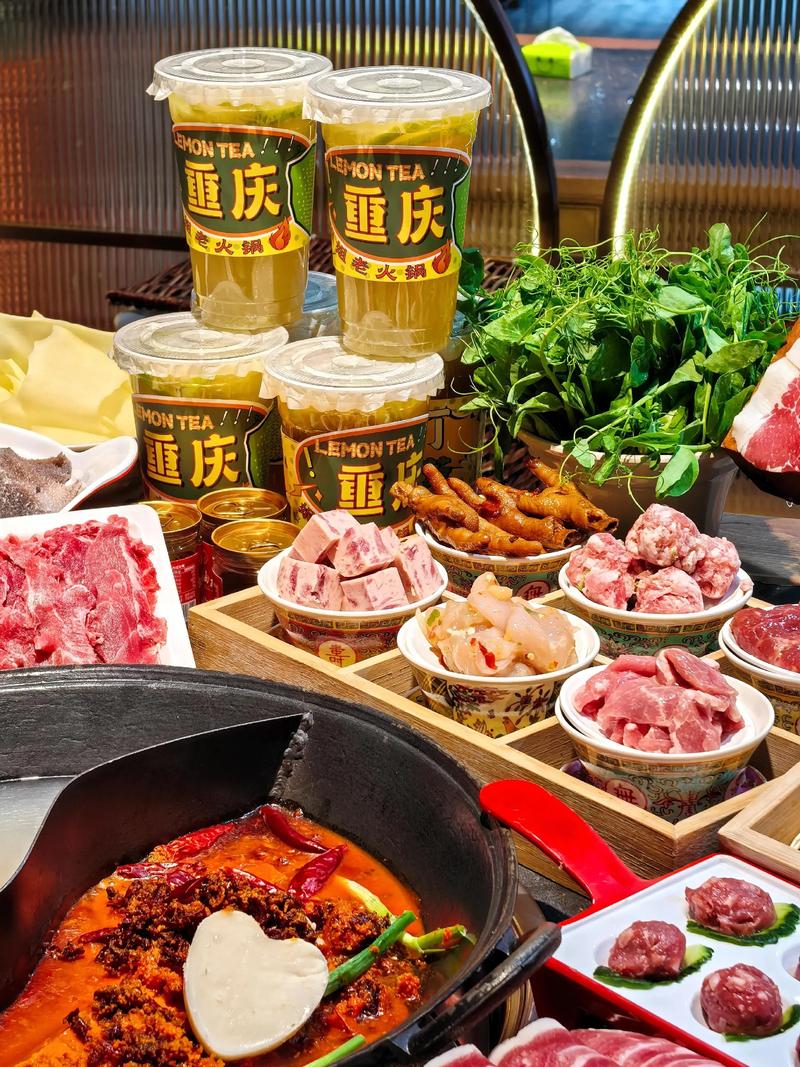Why Chongqing Should Be on Your 2025 Travel List?
Chongqing isn’t your average tourist city—it’s hotpot, high-rises, hidden gems, and a train that literally runs through an apartment. If you’ve been scrolling social media wondering what’s real and what’s just hype, we’ve got you covered. This 2025 guide breaks down the best things to do in Chongqing, whether you're here for epic photos, spicy eats, or wild skyline views.
From must-see spots like Hongyadong and Raffles City Sky Garden to offbeat finds like the Kuixing Building and underground bookstores, we’re diving into the real Chongqing experience—including where to go, what to avoid, and how to spot the city’s cyberpunk vibes. You’ll get tips on the top photo ops, what times to visit, and which “tourist traps” to skip. Whether it’s your first trip or your fifth, this list will help you see the city like a local.
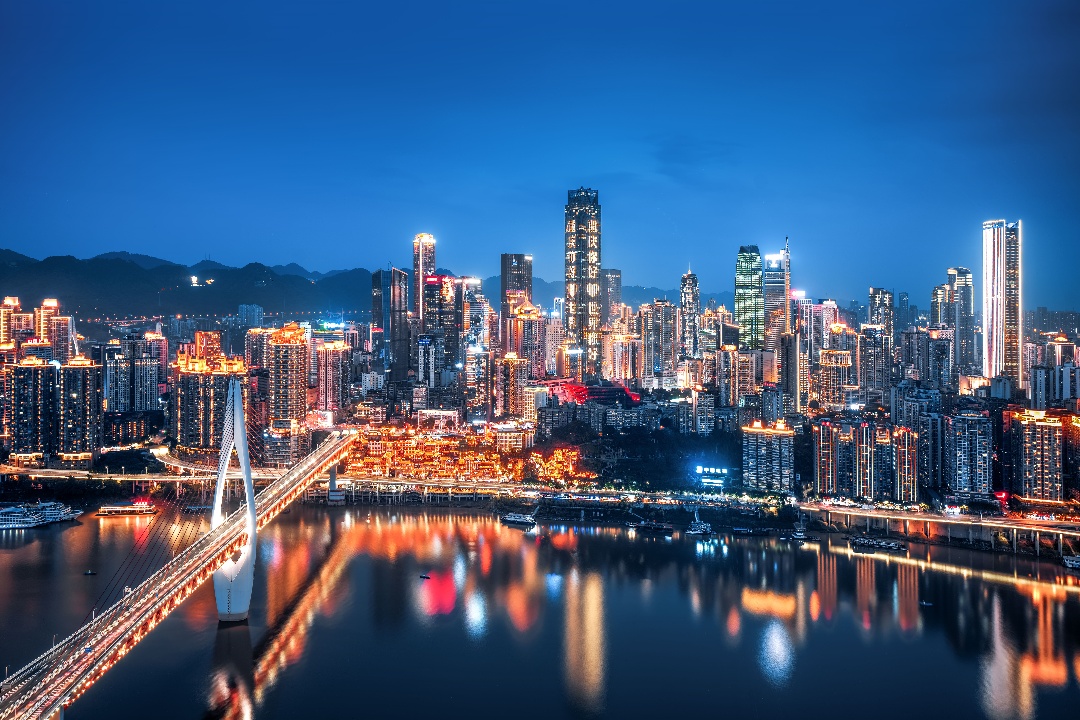
Mountain City Chongqing
Chongqing’s Cyberpunk Side: Where Reality Feels Like Sci-Fi
Liziba Station
You’ve probably seen it on TikTok or Reddit—the light rail that runs straight through an apartment block. That’s Liziba Station on Line 2. And yes, it’s real. The train doesn’t crash; it glides smoothly through the sixth to eighth floors of a residential tower. It’s not an illusion—it’s urban engineering at its most jaw-dropping. Locals ride it like it’s nothing. But for visitors? It’s one of the most surreal things to do in Chongqing.
Getting there is simple. Hop on Line 2 and get off at Liziba Station. Once you step out, follow the crowds and signs toward the viewing platform. The train comes every 5–10 minutes, so get your camera ready. For the best video, bring a tripod or use a phone stabilizer—especially at night when the neon lights glow. Bonus tip: go right after sunset for the perfect blend of natural and artificial light.
There’s no fee to visit the platform, but weekends get crowded. And don’t expect peace and quiet—expect shouting tourists and camera clicks. Still, it’s worth the hype. It’s not just photogenic; it captures Chongqing’s unique terrain-meets-urban lifestyle, a vibe often compared to Tokyo’s Shibuya or Hong Kong’s Mid-Levels—but with more hills and less English signage.
- Location: Liziba Station, Light Rail Line 2
- Ticket Price: Free
- Best Time: Around 6:30 PM for neon + skyline contrast
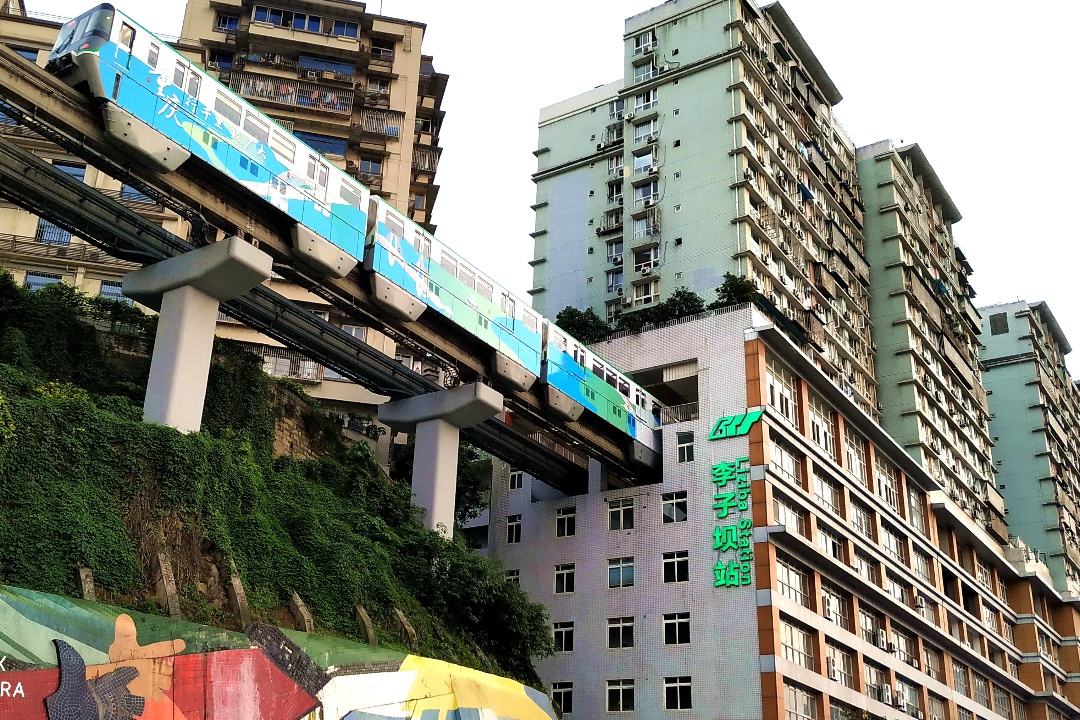
Liziba Light Rail Passes Through Building
Kuixinglou
Chongqing’s topography is so wild that standing on the “ground floor” might actually put you 60 meters above street level. Kuixinglou is a perfect example. It’s an ordinary apartment block—until you realize you're on the 22nd floor, looking out at what feels like street level. People walk past you, not realizing they’re technically in midair.
This spot became social media famous for its optical illusion. You’re up high—but not really. Locals use these sky bridges daily to cross between buildings perched on cliffs. If you’re hunting for cool things to do in Chongqing, especially ones that mix architecture and geography, Kuixinglou is a must.
For the best photos, stand on the pedestrian platform near the stairs and look back toward the building. The best time to go? Early evening. That’s when the ambient light brings out the city’s layers without blowing out your shot. And don’t be surprised if strangers ask to borrow your spot—they're after the same viral angle as you.
Fascinated by war relics and mountain legends? Click 7 Chongqing Historical Sites — a true feast for history lovers.
City Lights That Look Straight Out of Blade Runner
Chongqing at night feels like a sci-fi film set. The lights aren’t just bright—they’re stacked, layered, and often partially hidden by fog, creating a dreamy atmosphere that’s oddly cinematic. It’s this Blade Runner vibe that’s made the city go viral. If you're looking for things to do in Chongqing at night, this is where it gets interesting.
The best way to take it all in is on a night walk. Start from Jiefangbei, head toward Hongyadong, then cross to the Grand Theater for panoramic views. You’ll pass neon signs, LED bridges, and shadowy alleys lit only by storefront glow. Street vendors sell spicy skewers under flickering signs. It’s chaotic—but it’s also pure aesthetic gold.
Photographers often describe Chongqing’s nightscape as a mix of Seoul’s nightlife and Kowloon’s past. For tourists, it’s a free visual feast. Just pace it right—don’t try to cover everything in one night. Let the layers of light and city noise guide you instead.
· Suggested Route: Jiefangbei → Hongyadong → Qiansimen Bridge → Grand Theater
· Time to Go: After 7 PM when buildings switch to neon mode
· Budget: Around 20–30 RMB for snacks and transport
- Kuixing Tower
- Chongqing Night Scene
Capture the Magic: Best Photo Spots in Chongqing
Hongyadong (洪崖洞)
Hongyadong is easily the most photographed place in the city—and for good reason. This 11-story cliffside complex glows like a lantern stack at night, drawing comparisons to scenes from Spirited Away. But getting that perfect photo here? Not as easy as you'd think. Tourists often flood the lower levels, making ground shots tricky. For the best angle, head across the Jialing River to the pedestrian bridge or to the viewing deck at Chongqing Grand Theater.
Timing is everything. Visit right before 6:00 PM, when the lights flicker on, and you’ll capture that cinematic glow without heavy crowds. Wide-angle lenses work wonders here since the structure stacks vertically. If you’re serious about photos, come twice—once in daylight, once at night. Don’t bother eating here, though. Locals will tell you the food is overpriced and underwhelming. Save your appetite for more authentic spots.
Need help shooting? Chongqing has a bustling community of freelance photographers hanging around popular photo zones. You can hire them on the spot—just negotiate first. Prices range from 50 to 200 RMB, depending on the shoot. Some even provide props like lanterns or hanfu outfits. You’ll see why "things to do in Chongqing" lists always rank Hongyadong near the top—it’s a visual feast with layers of culture, commerce, and pure wow.
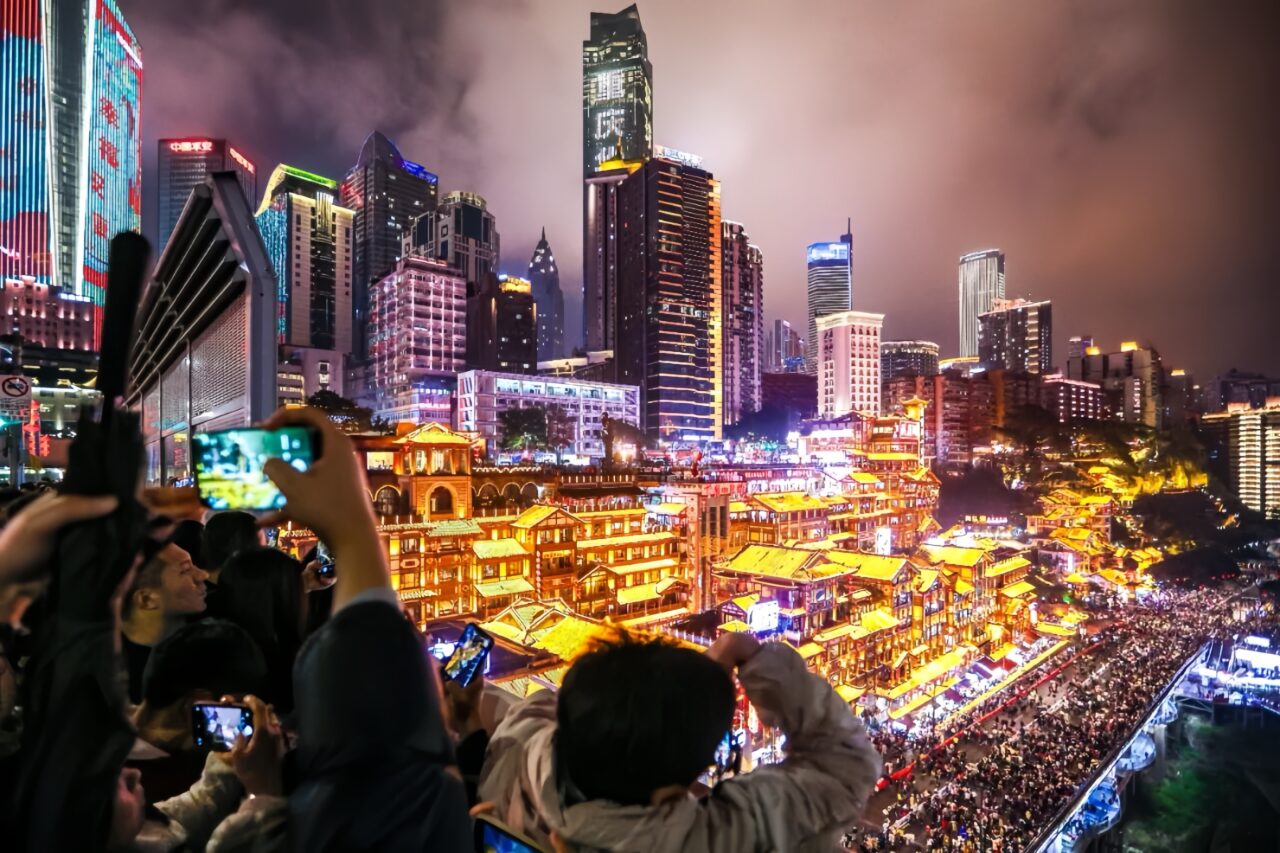
Chongqing Night Scene
Chongqing Grand Theater
This theater isn’t just for performances—it’s your front-row seat to one of China’s most dazzling urban views. Perched above the confluence of the Yangtze and Jialing rivers, Chongqing Grand Theater offers a sweeping skyline panorama, especially at night. The best part? It's open to the public, and the wide plaza out front is made for long-exposure cityscape shots.
Photographers love this spot because it's stable, spacious, and angled just right. You can capture the whole of Hongyadong glowing in layers, framed by bridges and boats. Local shutterbugs often gather here around dusk. If you’re into drone footage, check for restrictions—Chongqing's airspace is tricky, and some zones are no-fly. But for standard camera or phone shots, this place is gold.
Pro tip: bring a tripod and set up before 7:00 PM, especially on weekends. The reflection of the lights in the water creates a mirrored skyline effect that feels straight out of a sci-fi film. “Things to do in Chongqing” guides might mention the theater for shows—but real fans know it’s the night view that steals the spotlight. Bonus: you’re just a short walk from the metro, and the plaza stays lively late.
Raffles City Sky Garden
If you want a photo that screams “Chongqing is next-level,” head to the top of Raffles City. The Sky Garden—perched over 250 meters above ground—lets you walk on a glass-bottom bridge between skyscrapers. The views span the rivers, the foggy skyline, and the architectural mashup that gives Chongqing its vertical chaos vibe. It’s futuristic, thrilling, and yes—very Instagrammable.
Admission to the Sky Garden is around 100 RMB, and you can book through Ctrip
The swing attraction at the edge is not for the faint-hearted. Suspended hundreds of feet above ground, it gives you a moment of adrenaline and a photo that’s guaranteed to make your friends gasp. Go during the golden hour (5:30–6:30 PM) for warm lighting and minimal glare on the glass.
Want to look like a pro? Wear solid colors (red pops well), avoid reflective sunglasses, and clean your lens. Locals say this place gives the “sky” to your “cyberpunk” dreams. It’s a newer attraction, so it’s often less crowded than Hongyadong—though weekends still draw a crowd. In terms of photo-worthy things to do in Chongqing, this one's a must-snap.
- Chongqing Grand Theater
- Raffles Sky Garden
If you have a passion for art, the Chongqing Art Museum is an experience you simply can’t pass up.
Must-Try Chongqing Food Experiences (Beyond Hotpot)
Laojiefu Hotpot (老街福火锅)
Laojiefu Hotpot is a local favorite known for serving up some of the spiciest and most authentic Chongqing hotpot. This spot is the real deal if you're looking to dive into the local experience. The atmosphere is lively, and the crowd is always buzzing with excitement.
The menu is packed with all the traditional options you’d expect: beef tripe, duck blood, tofu, and fresh vegetables. But for the ultimate Chongqing experience, don’t miss out on the spicy numbing broth. Foreigners are advised to go for the Yuan Yang Pot (鸳鸯锅)—half spicy and half mild, so you can ease into the heat without burning your tongue off. Local favorites go for the full-on fire, but unless you’re used to extreme spice, take it easy. Budget around 80–120 RMB per person, depending on how much you order.
Laojiefu Hotpot is located in the busy downtown area, accessible by taxi or ride-hailing apps like Didi. The restaurant’s modern setting makes it a bit more tourist-friendly than some of the older, local spots. However, be prepared for a lively dining experience full of noise and people, making it a quintessential part of the Chongqing dining culture. Be sure to book ahead on Ctrip if you plan to visit on weekends or during holidays. LaoJiefu is just the start of the spice adventure; if you're ready to explore all the flavors that deliver ultimate Mala satisfaction, check out the Chongqing Food Guide.
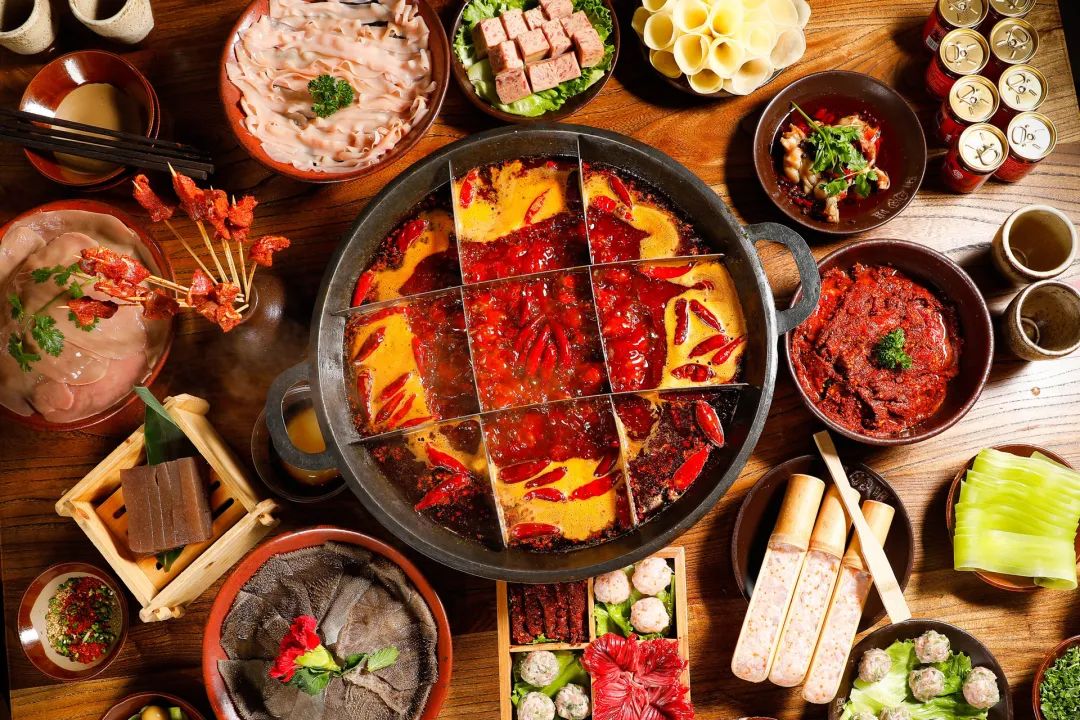
Chongqing Hotpot
Chongqing Noodles and Skewers
Hotpot isn’t the only thing that defines Chongqing’s food scene. In fact, ask any local what they eat when they’re not sitting around a boiling pot, and they’ll likely say 小面 (xiao mian) or skewers. These dishes are fast, spicy, and easy on the wallet.
Let’s start with xiao mian—thin noodles in a fiery broth, topped with green onions, peanuts, and preserved vegetables. The best bowls are found in side alleys and open-air shops. Expect to pay 8–15 RMB, and yes, they’re spicy by default. Skewers (串串 chuan chuan) are equally popular. Think of it as hotpot-on-a-stick. You pick your items—meat, tofu, veggies—and they get dipped in boiling broth and rolled in chili powder or dry spice mix.
For a tourist-friendly intro, try Maoxuewang or Tan Ya Xue chains, which offer cleaner environments and menus with pictures. But if you want the real vibe, go where students and cab drivers eat. Grab a cold beer, order 30 skewers, and brace your taste buds.
These street-level eats are why “things to do in Chongqing” includes hunting for food at midnight. It’s messy, cheap, and unforgettably flavorful.
Edible Souvenirs
Skip the keychains and magnets. If you want to take a piece of Chongqing home, bring back edible souvenirs that locals actually love. The number one choice? Hotpot seasoning bricks (火锅底料)—those spicy, fragrant red cubes you throw straight into a pot. You’ll find them at every supermarket, but insiders swear by brands like QiaoTou or DeZhuang.
Other hits include Mala-flavored beef jerky, spicy peanuts, and vacuum-packed duck necks. Yes, duck neck. Don’t knock it till you’ve tried it—it’s tender, spicy, and weirdly addictive. Most items are TSA-friendly if sealed properly. Just avoid fresh items like tofu or marinated vegetables.
Worried about language barriers? Go to a chain store like Chongqing Specialty Market (重庆特产馆) where labels are bilingual and staff are used to foreign buyers. Prices are super reasonable: a pack of premium hotpot base costs around 15–25 RMB. You can even pick up cute packaging options for gifting.
As far as foodie things to do in Chongqing go, shopping for flavor-packed take-home goods is one that keeps giving—long after your trip ends.
- Hotpot Base
- Chongqing Noodles
Chongqing at Night: River Views and Rooftop Bars
Stroll Shahao Old Street After Dark
If you want a blend of night culture, history, and locals-only vibes, head to Shahao Old Street (下浩老街). This lesser-known gem in Nan’an District comes alive after sunset with lantern-lit steps, quiet teahouses, and open-air bars carved into century-old buildings.
Unlike Hongyadong’s polished commercial vibe, Shahao keeps it raw and textured. Graffiti, old wooden facades, and cats lounging on steps give it an effortlessly cool atmosphere. Small shops stay open late selling handmade jewelry, postcards, and soy-sauce-simmered snacks. One minute you’re sipping plum wine in a bookstore-bar, the next you’re watching live folk music under an archway.
Budget-wise, it’s very accessible—drinks from 25 RMB, snacks under 15. No entrance fee. And yes, most vendors and shops accept WeChat Pay or cash. The nearest metro station is Shibanpo (Line 3), followed by a 10-minute walk down narrow lanes.
It’s one of those places where you’ll forget your itinerary, slow down, and just be. For a deeply local, soulful take on things to do in Chongqing, Shahao Old Street is the kind of place you’ll wish you’d known about sooner.
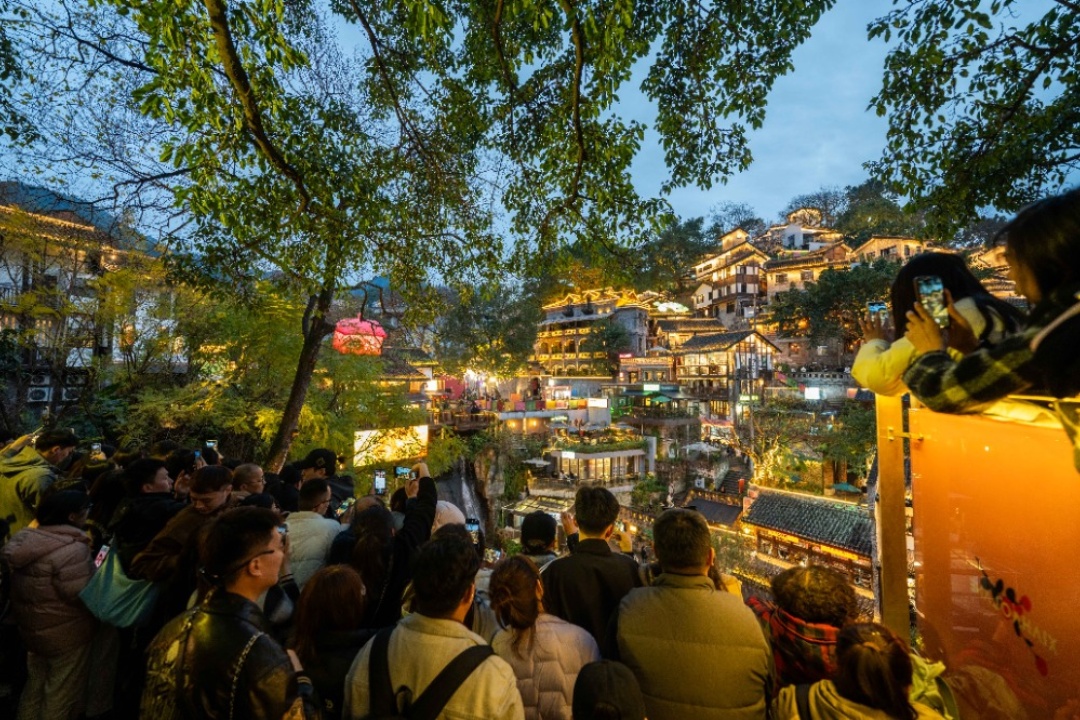
Shahao Old Street
Chaotianmen Riverside Walk
Looking for peaceful things to do in Chongqing after dark? Start with the Chaotianmen Riverside Walk. This riverside path stretches where the Yangtze and Jialing Rivers meet, offering a surprisingly calm way to feel the city’s rhythm. By day, it’s busy. But after 8 PM, the lights come on, the mist rolls in, and the vibe turns soft and cinematic.
Locals come here to jog, walk dogs, or just chill. You’ll see couples taking selfies and old-timers doing tai chi to music from portable speakers. The path is flat, well-lit, and perfect for strolling. Along the route, vendors sell cold drinks, skewers, and sometimes neon toys. The water glows from ferry lights, and if you’re lucky, you might catch a cruise docking—massive riverboats lined with color-changing LEDs.
It’s a low-cost, low-stress evening plan that gives you a slice of everyday life. No entry fee, no reservations. Just grab a drink, bring your camera, and watch the fog wrap around the bridges. Among all things to do in Chongqing, this walk might be the most quietly beautiful one.
Hidden Rooftop Bars Locals Love
Tired of the tourist crowds? Chongqing has a handful of hidden rooftop bars that serve up skyline views—without the selfie sticks. These aren’t flashy hotel bars. They’re often tucked atop residential towers, marked only by handwritten signs or tiny logos on elevators.
A few local favorites: Code Bar near Daping offers whiskey and techno beats. Huakai Bar in Yuzhong hides above a plant shop, complete with string lights and potted citrus trees. Drinks start from 40–60 RMB, and most bars don’t charge a cover. Want to meet real locals? Strike up a chat about food or mountain weather. It works.
Expect foggy glass, chilled beer, and speakers playing anything from Cantonese jazz to chillhop. You won't always get clear skyline shots, but you’ll definitely feel the city’s mood. Many bars stay open till 1 or 2 AM, and some even offer local snacks like spicy peanuts or cold noodles.
In a city known for drama and density, these rooftop escapes feel personal and real. If you want low-key, unforgettable things to do in Chongqing—this is your vibe.
- Chaotianmen
- Rooftop Bar
Where to See Pandas in Chongqing Without Regret
Chongqing Zoo—But Early
Seeing pandas is high on most travelers’ lists of things to do in Chongqing. But here’s the catch: pandas are early risers. If you show up after 9:30 AM, chances are you’ll only see a napping ball of fur, not much action.
Plan to arrive at Chongqing Zoo (重庆动物园) around 8:00 AM. The pandas are fed early, usually by 7:30, and they get super active while munching on bamboo. By 9:00, they’re already winding down. Morning is the only time to catch them climbing, rolling, and goofing off like the icons they are.
The zoo itself is clean, affordable (around 30 RMB), and easy to reach by Metro Line 2, Zoo Station. Foreigners can scan WeChat Pay or Alipay at the entrance, or buy tickets via Ctrip with an international card. While the rest of the zoo is nice enough, most visitors go straight to the panda pavilion. Just don’t linger too long—it gets packed by 10 AM.
- pro tip: don’t trust the weather too much. Even on a hot day, mornings in Chongqing can be misty and cool. Bring a light jacket, wear comfy shoes, and skip breakfast—you can grab something near the entrance afterward.
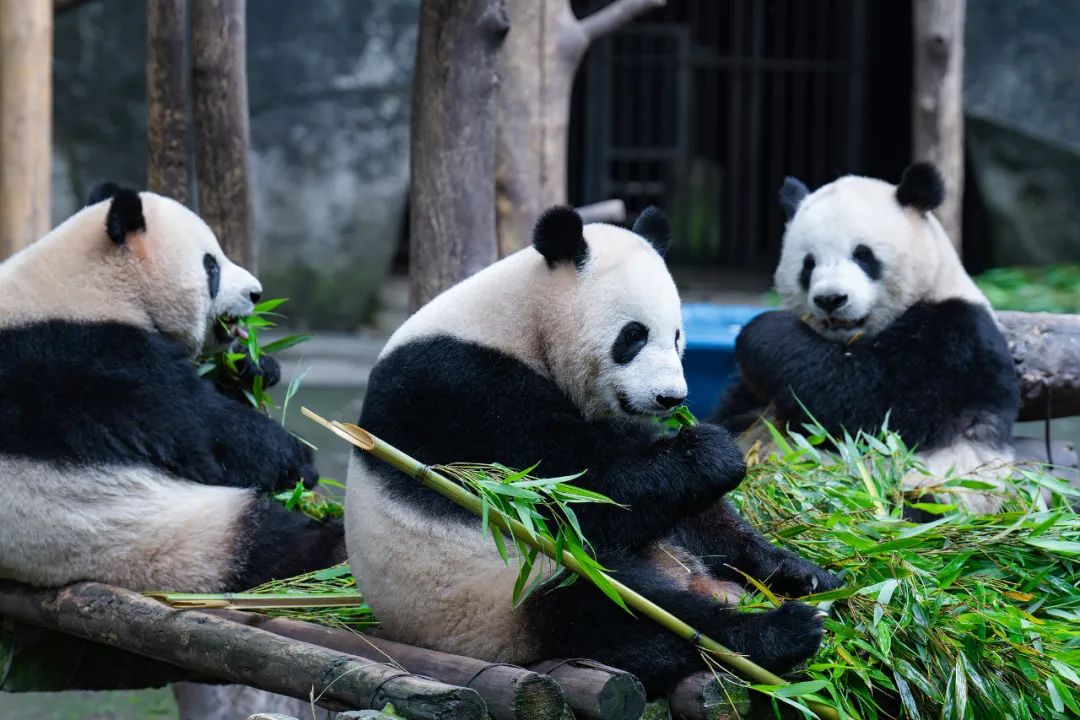
Pandas at Chongqing Zoo
Best Panda Viewing Spots
Once inside the zoo, head directly to the Giant Panda Pavilion. It’s clearly marked and only a five-minute walk from the main gate. There are both indoor and outdoor viewing areas. Most people crowd around the indoor glass walls, but the real action? That’s usually outside, especially in the early morning.
Look for shaded areas, trees, or rock structures—pandas love those. Don’t rely on your phone’s zoom. Instead, walk to the side paths where fewer people go. You’ll often find better angles and shorter fences. Want clear shots? Use portrait mode, tap to adjust brightness, and avoid using flash—it irritates the animals.
Be respectful of the space. Don’t shout or tap on the glass. And if you have a DSLR or vlog camera, stand back a bit and use a longer lens. The zoo allows photography but not selfie sticks or drones. You might also run into zoo photographers who’ll offer paid panda photo packages, but honestly, DIY shots usually come out better.
This spot remains one of the most affordable and reliable things to do in Chongqing, especially for families and first-time China travelers. And it’s a great way to mix sightseeing with a brush of cute overload.
Other Family-Friendly Spots Nearby
Don’t rush off right after the pandas. There are a few kid-friendly or relaxing stops nearby to round out your morning. Within walking distance of the zoo is Chongqing Amusement Park (重庆游乐园)—not huge, but it has a Ferris wheel and some retro charm. Entry is about 50 RMB, but it’s free to walk the grounds if you skip the rides.
Another option is Yangjiaping Commercial Street, one metro stop away. You’ll find open-air breakfast stalls, bookstores, and arcades. Grab a bowl of xiao mian (Chongqing noodles) or sweet soybean milk while people-watching. For something educational, Chongqing Science and Technology Museum is a short taxi ride from the zoo and fun for kids aged 5–12.
Want green space? Try Eling Park (鹅岭公园). It’s on a hill, not far from the zoo by taxi. You’ll get panoramic city views, shady pavilions, and a relaxing place to cool off before heading back to your hotel.
So don’t treat panda-watching as a one-off. Combine it with casual local stops and you’ve got one of the most low-effort, high-reward things to do in Chongqing.
- Giant Panda Base
- Chongqing Happy Valley
Hidden Gems Locals Love (And Tourists Miss)
Guanghuan Shopping Park
This place barely shows up in most lists of things to do in Chongqing, which is a shame. Guanghuan Shopping Park (广寰购物公园) looks like just another mall from the outside—but inside, it feels like you’ve walked into a neon-lit forest straight out of a sci-fi movie.
The design blends lush greenery with glass walls and mirrored ceilings. It's more “Instagram jungle” than shopping center. Giant tree installations twist up through floors, glowing in soft greens and purples. The escalators even run through fake waterfalls. Most people come here just to take photos—it’s a hot spot on Xiaohongshu (China’s Instagram). You’ll see couples doing full shoots, and influencers setting up tripods.
There are stores, yes, including international brands and local boutiques. But the real draw? It’s free to enter, never too crowded, and air-conditioned—perfect for escaping summer heat or foggy rain. You don’t need to shop to enjoy it. Just wander, take a few shots, maybe grab a coffee, and relax.
Want to level up your photos? Visit at 6–7 PM, when the lights start to shift colors and reflections get more surreal. This mall might not make international headlines, but for travelers chasing that “cyber-Chongqing” vibe, locals swear by this spot.
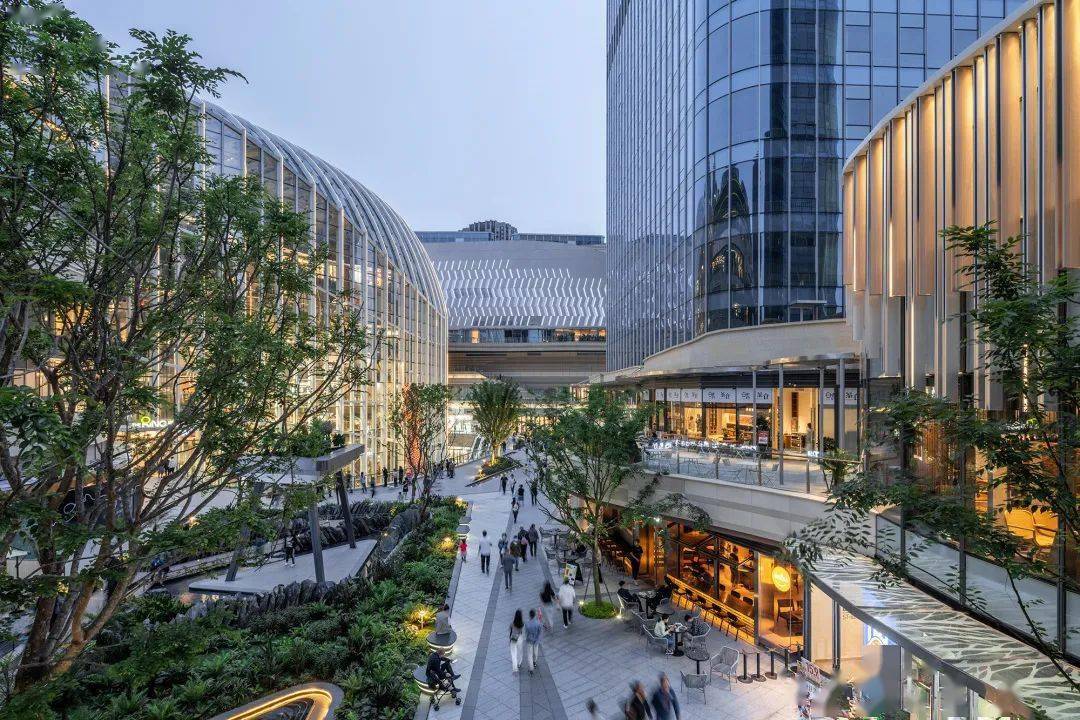
Halo Shopping Park
Zhongshuge Bookstore
You’ve seen it on TikTok or Xiaohongshu—the upside-down bookshelves, infinity mirror floors, and spiraling staircases that look more Hogwarts than bookstore. Zhongshuge (钟书阁) is one of the most visually stunning places to visit in Chongqing, and surprisingly, it’s easy to miss if you stick to basic tourist maps.
Located inside a half-abandoned shopping complex, it feels like a time warp. You enter from a regular mall hallway, then boom—you’re inside a fantasy world made of books. The space is designed to be immersive. Archways become bookshelves. Reflections play tricks on your eyes. Even the seating looks like floating paper lanterns.
The best part? It’s not a tourist trap. Locals come here to actually read and buy books. You’ll see students studying, couples flipping through art books, and families browsing kids’ stories. While most books are in Chinese, you can still enjoy the vibe and grab some aesthetic souvenirs—postcards, journals, even book-shaped lamps.
Entry is free, but photography isn’t allowed in some rooms (look for signs). Go early on weekdays to avoid crowds, and bring a wide-angle lens if you want those full-room shots. This place proves that even bookshops can be among the most surprising things to do in Chongqing—especially if you’re into architecture or interior design.
Rail Line 2 Between Stations
Everyone knows about Liziba Station, where the train dives through a building. But what most tourists miss? The entire stretch of Metro Line 2 has some of the best views in the city. This line winds up hills, across bridges, and through canyons of neon-lit towers—like a free rollercoaster with city views.
Hop on at Niujiaotuo Station and head toward Daping or Yuanjiagang. Sit by the window on the right-hand side if you’re heading west. You’ll catch glimpses of the Yangtze River, massive construction sites hanging off cliffs, and quiet neighborhoods tucked between skyscrapers. It’s not polished or curated—it’s raw, lived-in Chongqing.
This ride costs just 2–6 RMB, depending on distance, and takes less than 20 minutes. No tour needed, no entrance fee, no planning. Just you, the window, and the mountain city unfolding outside. It’s a great way to decompress between major attractions—or to start your day with a quiet, cinematic ride.
If you’re into city photography or urban exploration, this stretch gives you dozens of chances to snap shots that feel authentic, not staged. Just make sure to tap out with your metro card or mobile app at the right stop—many foreigners forget this and end up stuck at the gate.
Sometimes, the most underrated things to do in Chongqing don’t involve spending money or checking off famous names. Sometimes, it’s about riding the same train locals take every day—and seeing the city the way they do.
- Zhongshuge Bookstore
- Subway Line 2
Best Time to Visit Chongqing: Weather, Rain, and Comfort Score
Wondering when to plan your trip to Chongqing? This chart breaks down three key travel factors by month—comfort score, average temperature, and rainfall—to help you make the smartest choice.

Generally, April, May, September, and October score highest for comfort. These months bring pleasant weather without the intense summer heat or heavy rains. In contrast, July and August tend to be hot and humid, while June to August sees the highest rainfall.
If you’re all about enjoying rooftop bars or long walks along the riverside, aim for the spring or fall. But if you don’t mind the heat, summer is when Chongqing feels most alive—think street food, night markets, and river breezes.
- Best months: April–May and September–October
- Rainiest months: June–August
- Hottest months: July–August
- Coldest months: January–February
Stay Smart in Chongqing: What to Avoid and What You’ll Need
Skip Eating at Hongyadong
Hongyadong may light up Instagram, but it’s not where locals go to eat. The food looks flashy but often falls short on flavor, especially when compared to hidden street spots nearby. Most dishes are overpriced, with small portions and long waits. It's more about the view than the food—and you’ll taste the difference.
Instead, walk five minutes to local restaurants near Chaotianmen or across the Jialing River in Danzishi. These areas serve up authentic Chongqing flavors at half the price. You’ll get better spice, real wok hei, and zero tourist markup. Ask locals or use Dianping (with translation) to find top-rated spots that don’t make it to travel blogs.
If you're short on time, grab spicy cold noodles or skewers from a night market vendor. Just make sure it’s a stall with a steady local crowd. That’s your best flavor insurance. For non-Chinese speakers, show a screenshot of dishes you want—it works like magic.
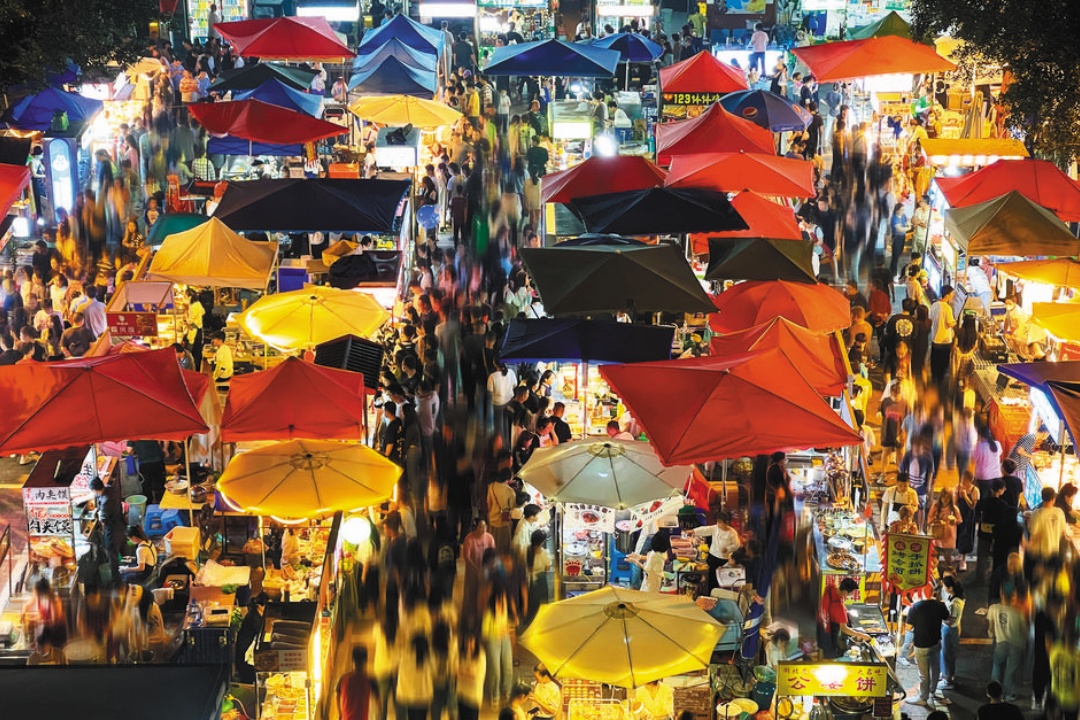
Night Market
Don’t Rely Only on Taxis
It’s tempting to flag down a taxi, especially with Chongqing’s hills. But here’s the thing: you’ll likely end up stuck in traffic or overcharged. Taxi drivers sometimes avoid using meters or take long routes when they spot a foreigner.
Your best move? Download the “CQ Metro” app and use Chongqing’s rail system. It’s cheap (2–7 RMB per ride), clean, and runs through nearly all key neighborhoods and tourist zones. Plus, you get to enjoy epic city views while avoiding road congestion.
For late-night rides or off-grid areas, use Didi with a translated destination ready. Avoid rush hours unless you want to sweat it out in gridlock. Bonus: Didi lets you pay with Alipay or WeChat, no need to carry cash or explain your route in Mandarin.
Be Wary of the Hills
Chongqing’s hills are no joke. What looks like a five-minute walk on the map might actually involve 20 minutes of steep stairs. Even locals avoid certain pedestrian routes after rain—slippery, tiring, and no handrails.
Before setting off on foot, check the terrain with satellite view or reviews on MapsMe. If you’re going from Hongyadong to Jiefangbei on foot, brace for a hike—or use the escalators inside nearby malls.
Also, wear shoes with grip. Leave the flip-flops behind. If you’re exploring with luggage, always choose subway exits with elevator access. Look for the 残疾人 (accessible) symbol at each station. Your knees will thank you.
- Taxi in Chongqing
- Steep terrain
Must-Have Apps
Navigating Chongqing without the right apps is like eating hotpot with a fork—frustrating. Start with MetroMan or Amap (with English setting) for subway directions. For food, Dianping is your Yelp-meets-Instagram.
To get around, Didi Chuxing is essential. Unlike taxis, you won’t need to haggle or explain routes. For payment, Alipay or WeChat Pay are king—most stores, even convenience shops, don’t accept Visa. Use your passport to set them up.
Need translation? Pleco (offline Chinese dictionary) + Google Translate will save you tons of confusion. Take screenshots of your hotel, key landmarks, and dishes you want to try—signal isn't always great in underground areas.
Best Areas to Stay
Want fewer hills, easy metro access, and plenty of food nearby? Base yourself in Jiefangbei CBD, Guanyinqiao, or Shapingba. These areas are safe, walkable, and full of restaurants, malls, and night spots.
Jiefangbei is perfect for first-timers—it’s central and close to major things to do in Chongqing like Hongyadong, the Grand Theater, and the riverfront. Hotels here often accept foreigners, just check the listing notes on Ctrip (携程) .
For a more local vibe, stay near Guanyinqiao—good value, fewer crowds, and close to Line 3. Avoid staying near major transport hubs unless you're catching a very early train or flight—many are far from the action.
Power and Payments
Most wall sockets in hotels accept Type A, C, or I plugs. But not all. Bring a universal adapter with surge protection. You can get one on Amazon before your trip for around $10–15.
The voltage standard here is 220V, so double-check your electronics.. If you’re unsure, avoid plugging in directly. Many hotels and hostels don’t provide adapters, so come prepared or ask at the front desk early.
Cash? Not much use. Chongqing runs on mobile pay. Set up Alipay or WeChat Pay with your foreign card—our full guide on Alipay for foreigners walks you through it. Want extra backup? Carry a prepaid UnionPay card from your bank if possible.
Frequently Asked Questions (FAQs)
Q: Is Chongqing worth visiting if I’ve already been to Shanghai or Beijing?
Yes—absolutely. While Beijing and Shanghai offer history and modern city vibes, Chongqing hits differently. It’s a mountain city with a wild layout, neon-lit skylines, foggy river views, and one-of-a-kind things to do like watching a train pass through an apartment (Liziba Station). If you're looking for a gritty, futuristic, and spicy slice of China, this is your spot.
Q: Where can I get that “cyberpunk” vibe everyone talks about?
That viral chongqing cyberpunk aesthetic? It’s real, and it's wild. Head to Liziba Station, where the monorail literally passes through an apartment building—best seen lit up at night. Then check out Kuixinglou, where the 22nd floor feels like ground level thanks to the city’s stacked architecture. Toss in some neon, fog, and glowing signage, and you've got your sci-fi movie set.
Q: I only have one full day in Chongqing—what should I prioritize?
Focus on variety. Morning: ride Line 2 and hit Kuixinglou. Midday: snack on street skewers or try a mini hotpot. Afternoon: see Hongyadong from across the river. Evening: head up to Raffles City Sky Garden for views, then wind down at a riverside bar. That gives you iconic views, street food, and futuristic vibes—all the essential things to do in Chongqing in 12 hours.
Q: Is the panda zoo worth it, or should I wait until Chengdu?
If Chongqing Zoo is already on your route—go early and go fast. The pandas are active from 7:00–9:00 a.m., then they nap hard. While Chengdu has a larger reserve, Chongqing Zoo is still a solid pick, especially for short stays or travelers with kids. Just don’t roll in after breakfast or you’ll only see empty enclosures.
Q: Should I worry about language barriers when visiting local spots?
Most tourist-facing areas have basic English signage, but download translation apps like Baidu Translate or Pleco before you go. Restaurant menus might not be in English, so apps that scan and translate text are a lifesaver. Bonus tip: WeChat with a Chinese SIM card unlocks a whole new level of travel ease.
Q: How do I avoid wasting time or falling into tourist traps?
Great question. First, don’t spend too long in Hongyadong or Jiefangbei. They’re cool, but better from a distance. Second, don’t underestimate the hills—they’ll burn your legs and your time. Last, use the metro—fast, cheap, and easier than you think. These smart moves save hours and energy for the real things to do in Chongqing.
Want more China travel ideas? Don’t miss our insider guides to Beijing, Shanghai, Guangzhou, and Chengdu—real tips, no fluff.
